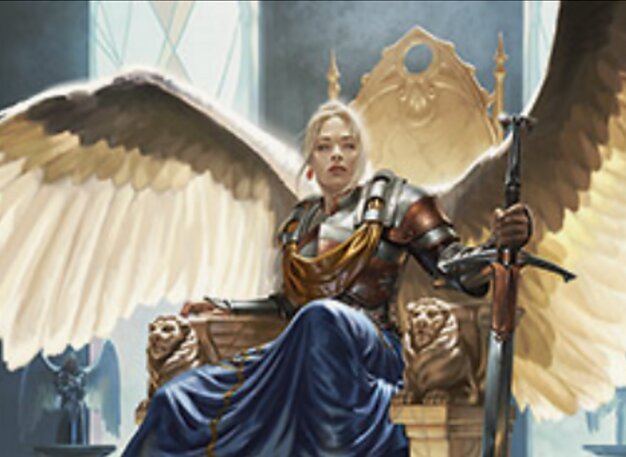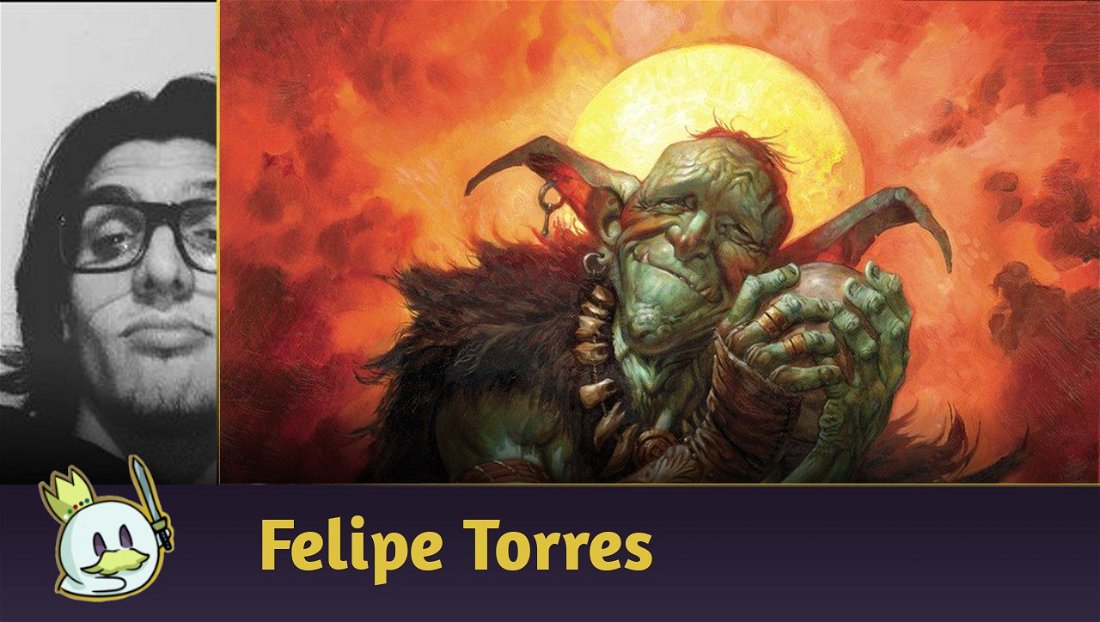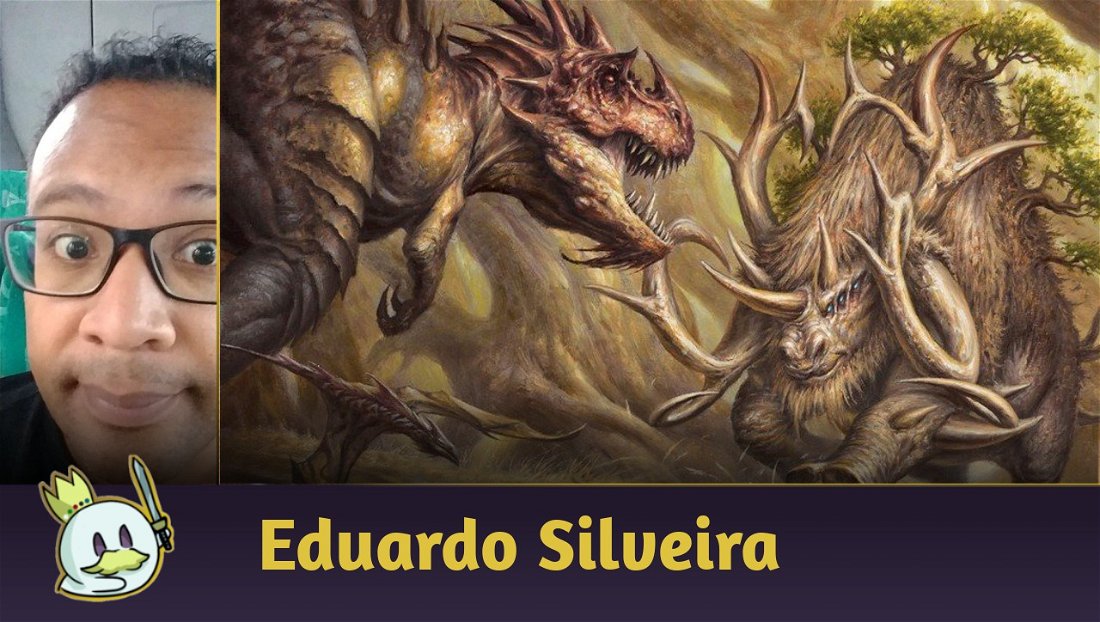About Pauper and Pauper Commander
Today, many players who are in the Pauper Commander community play or have played Pauper, there are even some who started playing because of PDH. This fact is excellent for our topic today, as it can bring the two formats and communities even closer.
Pauper, which together with Commander gave rise to Pauper EDH, is very popular and increases in number of players every year. Our dear Pauper PDH grows a bit slower, but the trend is that this growth will accelerate over the years, as playing Magic, in general, is increasingly expensive.
Banned from PDH
Pauper Commander is fun, and of course, accessible, and these two features perfectly combined, become a recipe for success. The cost-benefit is great and still allows you to explore deck building with everything that exists when it comes to common cards, except for Rhystic Study and Mystic Remora, which were banned from the format.
Taking advantage of the fact that we mentioned this very short banlist, this is a fact that always raises doubts among new Pauper Commander fans — the legality of the cards. The question always arises if the cards banned in Pauper are legal here, and the answer is encouraging: yes, all of them are legal, even the artifact Cranial Plating, which never saw play in Pauper officially, can be played at Pauper Commander!
The lists
To further strengthen the ties between the two formats, I bring ten lists inspired by the main Pauper decks and adapted for Pauper EDH, using a combination of cards that starts with influences from more recent lists and goes up to their classic lists, and even some forgotten techs. The decks chosen are those that make up Pauper's history, the most popular in these more than eleven years, going up to the most iconic and that were part of the top of the Metagame at some point.
It is important to point out that the decks presented here were all created and tested in different combinations of tables, but we did not fully explore the potential of each of these decks, allowing the reader to use the list as a basis, being possible to improve and adapt it according to your play style.
Pauper EDH is very democratic in this aspect, each player can adapt any list as much as necessary. This is a tip that I consider great for those who are starting not only in the format, but starting in the art of creating decks, deckbuilding — getting a ready-made list (or not), playing, realizing its strengths and weaknesses, and make the changes you deem necessary. With this, you will gain more knowledge and more confidence to create your own decks.
The lists we prepared use, if not all, most of the cards from the chosen decks, and to be able to assemble them with 99 cards plus the Commander, we use cards from other decks considered to be of the same segment or archetype, or even the same strategy, or similar game plans.
Monocolored decks in PDH
We will start with the mono colored decks, which were formerly the safest option for beginners in Pauper, for their low complexity in finding out the correct manabase, and also for their strategy being considered straightforward and simple to understand – although, acquiring experience with the deck, you will notice that despite a direct plan, the way you play with the deck influences a lot in the game, when it comes to the interactions that they can have.
We chose one of each color, which tell a story of a Pauper moment, and some of these decks, in addition to the main reference, have influence from others of the same color.
Mono Black Control

We use the basis of the Mono Black control, the one that has been very dear to players of the format for a while, many years ago. The deck does what Pauper's MBC normally proposes to do, generating some value during the game, whether with discard, card draws and life gain, many removals to delay opponents' plans, in addition to running Carrion Feeder, which leaves the deck with an aristocrat option. The deck even has Pestilence and Crypt Rats, which will serve as sweeper, while also helping to eliminate opponents.

The commander is Havoc Demon, which is another sweeper if the game gets too complicated, where the opponents managed to get too far ahead in the match, you can use some removals or the aristocratic creatures to make it die. It's important to note that all Commander rules apply here, so rule CR 903.9a works the same way in Pauper Commander: if Havoc Demon dies, it goes to the graveyard, triggers the ability, and then the player can choose to place it in the command zone.
Other commander options may be more synergistic, such as Gray Merchant of Asphodel or even work as removal/damage to opponents, like Crypt Rats.
Mono White
This is an Aggro deck that has been the gateway to Pauper, especially for beginners in Online mode, as it is very strong, simple to understand how it works and is also very cheap. Their commanders are Radiant, Archangel and Ardenn, Intrepid Archaeologist.

In Pauper EDH it follows part of the game's standards, and whoever chooses this deck can choose to put more creatures with Heroic because for our version, we used the basic Pauper heroic cards, knowing that there are few creatures with this ability, and we added some functional creatures for the game plan, such as Souls Sisters, to gain a lot of life, preventing the opponent from killing you.
Other cards that make up the deck in the same way as in Pauper are auras, which will make creatures even better than they are. Some cards give protection to these creatures on the field, and the deck also has some token creations. We can conclude then that, even if the main plan is Heroic and enchantments, it still has references in other decks, such as Soul Sisters and White Weenie.
Mono Blue Faeries
Mono Blue is a deck that appears with some frequency, especially among players who like blue, or countering opponents' resources. Today, it is on the rise again, due to recent releases that have made it a huge powerhouse.
We followed Pauper's standards as closely as possible, placing faeries that generate absurd value for the deck, scrying and untapping lands, in addition to counterspells. We also included ninjas, which will accelerate damage to opponents, in addition to providing card advantage. The ETB combo could not be left out because in blue it is stronger, and can be executed faster, due to cantrips and draw cards, and more safely.
Some enchantments will render opponents' pieces useless. Bounces, such as Curfew and Snap, will return threats to the hand, being the way to deal with creatures, as there are no removals in blue.

The commander, Archetype of Imagination, is an essential part of the deck, practically making your creatures unblockable, and after the game is more controlled, hitting the weaker creatures all together can be your path to victory.
Mono Red Burn
Burn is an ever-present deck in Pauper's Metagame — even though it's more discreet at times, there's always someone playing with it.
For Pauper Commander, we brought in Burn, of course, but it wouldn't be possible for a 100-card deck to just go for direct damage to win; so we completed it with Goblins, who also have a historic role in the format's Metagame.

The commander, Syr Carah, the Bold, has interaction with the deck since red doesn't have as many efficient ways to draw cards. Pay attention to the fact that the damage that this commander deals when tapped, if it is on a player, does not count as commander damage, as only damage inflicted in combat is valid for this purpose.
This deck has a lot of potential, and it can be a bomb, so be patient and feel it as you play with it. Here we use Dragon's Approach which can have any number of copies in the deck. It deals three damage to all opponents, and can exile some of them, just cast one, and put one of the two dragons on the battlefield, without paying their costs.
Goblins add another wincondition, due to their synergy, but make sure you can place one of the enchantments on the battlefield to speed up the damage dealt—both, if possible.
Mono Green Stompy
The deck, often considered the most aggressive in the format, as it quickly hits many creatures with cards that increase its power, can seem slightly fragile, due to the color not favoring a full hand.
But anyone who thinks that this makes it too weak is wrong: for Pauper Commander, we joined the deck to Elves, even because many of Stompy's creatures are already of this type, which only makes the deck more powerful, causing more damage, with some allowing to draw cards and gain life.
The sorceries and instants will bring more lands to play and look at some cards from the top, giving the deck the rotation it needs.

The commanders have two important roles: Gilanra, Caller of Wirewood is here to generate mana, and still draw cards if the requirement is met, and Halana, Kessig Ranger aims to remove creatures, both fundamental to the game, as green doesn't have many ways to draw cards, let alone remove creatures efficiently.
Iconic Decks
For the second part, we brought decks that have a relevant history in Pauper, due to their longevity in the format, in addition to some remarkable passages through the top of the metagame. We even have cards that in some cases had a persistent presence at the top, generating discontent in a portion of players and some frequent ban requests.
In Pauper EDH this doesn't happen, we have a small banlist, just Rhystic Study and Mystic Remora. This posture brings security to the player, who can build their deck calmly, without the constant fear of losing cards or the deck itself.
The PDH committee encourages deckbuilding, the quest to build a deck that represents the player, that can deal with threats from opponents, be strong enough, and still be fun.
Mardu Monarch
We come to the first of our historic decks, Monarch. For a long time, Boros Monarch was considered one of the strongest in the format. Over time, it has undergone some changes, such as the addition of black, and it has branched out as well, with the Kuldotha Boros and Boros Bully decks, which are more token-focused decks. For Pauper Commander, we tried to bring these three lists together within a Monarch base, with artifacts and creatures that generate a lot of value in the game.
Starting with the manabase, which needs to be well diversified, as it is a three-color deck. Artifacts supplement this manabase, with signets, filters, and mana rocks.
The deck has enchantments that have many uses, such as damage, sweepers, permanent removal, damage prevention, in short, it's a collection of the best enchantments in Mardu colors. While they are not synergistic with each other, they independently help the deck drive your game to victory.

Creatures add a lot of value to the game, drawing cards, dealing damage, gaining life. The commander, Mardu Roughrider, is not "very strong", but can prevent blocks at decisive moments in the game.
The spells alternate as removals, damage, drawing cards, and discarding opponents, in addition to creating tokens.
It looks like a mix of the best in colors, forming a deck that is not very synergistic, but that works in practice and doesn't have many weaknesses. It's much faster than it looks.
Fog Tron
Of course, we wouldn't leave Fog Tron out, which has been going through critical moments in the format, although it has been at the top of the meta for more than two years. The deck brings together all the best that plenty of mana can afford, such as removals, damage prevention, life gain, tutors, ramps, cantrips, card advantage – in short, a beautiful Toolbox.

We were in doubt as to which commander to use. For a few moments, we thought about the Bant combination (white, blue and green), due to the game inhibitors, and it is an option that I strongly recommend, but the objective is not to bring a Tron adapted to what it has today, but to bring it from back to that Tron loved by some and hated by many others. We opted for Sphinx of the Guildpact, a creature that will do a lot of damage in the late game, to help end the game, and the fact that it has protection against monocolored can make it practically indestructible, since there are few spells of more than one color that remove creatures.

The deck runs the well-known ETB combo, with the blue cards that allow the combo to work (Mnemonic Wall, Ghostly Flicker, Ephemerate, Archaeomancer) drawing, generating infinite mana, among other functions that ETB can provide. The player who chooses it will be able to make the change that they think is best suited to their style and the tables they play, according to what they expect to face.
Affinity
Affinity is one of the most iconic decks in the format. It has always been at the top of the Metagame from the beginning, with a very high potency since its first lists, even before the official announcement of the creation of Pauper, in December 2008. Because of this and the fact that some cards are very oppressive in other existing formats, Cranial Plating has been banned. But in Pauper Commander we can use it, and it will be as good as we can expect.
The deck has ventured into several color combinations, having even used four colors, to use Auriok Sunchaser in deck with blue, green and red. It also used black, along with the three colors mentioned, for the Disciple of the Vault.
Over time, the deck build changed, from the traditional Temur, it went for Jeskai, more recently for Grixis, always keeping the blue and red because of Thoughtcast and Atog. With the recent bans, some fundamental cards for the deck came out, so the black and red version has been the most popular.

For Pauper Commander, we chose a more up-to-date color combination, which was very successful and synergistic, Grixis (black, blue and red). With these colors, we'll be able to use Atog as one of the deck's main win conditions. It also has the combo between Makeshift Munitions and Disciple of the Vault to deal chunks of damage to the opponent.
An excellent card combo is to use sacrifices with Atog, get everything back on top with Drafna's Restoration, and draw many cards with Rush of Knowledge, having one of the high-cost creatures in the deck in play. Energy Tap will help you gain access to mana to recast the artifacts and repeat the process with Atog.

Unfortunately, we don't have a commander with a nice synergy for this color combo, so we used Sedraxis Specter. It may enter the battlefield a few times, but if it does, it can help to discard some pieces that may be important to the opponent, and of course, draw some attention to removals or counterspells.
The rest of the deck does what Affinity proposes: Fling, Temur Battle Rage, some cantrips to make it run, in short, it behaves very similarly to Pauper.
Dimir Faeries
This is undoubtedly one of the best, if not the best color combinations in Magic today, especially when it comes to common cards. In Pauper, blue and black have been among the best since its early years of existence, varying lists that started with faeries, which bring a lot of value and appeal to the deck, in addition to evasion.

This excellent combination goes from Pauper to Pauper Commander as well, as the Dimir guild gathers everything needed to stay in the game: draw cards, counter spells that offer dangers, remove threats, and even tutor spells with Mystical Teachings, Merchant Scroll and with Transmute spells.

The deck has a combination of Faeries, which generate value when they enter, like Faerie Seer and also does what blue propose, counterspells, like Spellstutter Sprite. Ninjas are the perfect companions for faeries, like the new Moon-Circuit Hacker. They are important to keep the gas running, in addition to returning some creature that generates value when it enters the battlefield.
The monarchs, Thorn of the Black Rose and Azure Fleet Admiral, could not be left out of the deck, which, if cast at the right time, will guarantee an advantage for a long period of the game.

Of course, any quality UB commander could be chosen, such as Baleful Strix or Disciple of Deceit, but we chose Krydle of Baldur's Gate here as its ability allows it to do a similar effect to ninjas, going for plenty of advantage during the game.
Finally, we would not leave out the ETB combo, here with fewer pieces, as it is not the pillar of the deck, but an additional threat.
Storm
The last deck on our list is Storm. In Pauper, the deck focuses its strategy on generating a lot of mana and casting tons of spells to increase its storm counter and probably end the game with some Storm card. The latest version of the deck has undergone a lot of change, with Chatterstorm and Galvanic Relay being banned.
But the deck is not recent, it already had another version, which for its oppression, was also banned. Storm was very popular between 2011 and 2012, and had cards that would still do a lot of damage to the format. But in Pauper Commander, you can use all of them, both old and new. It's a mighty deck, but it's going to be the target of the table, as there will be a constant concern for when you will go off.
As we can only use one copy of each card, Storm spells wouldn't be enough to bring a deck focused only on that strategy, so we added another one together: Eldrazi token creation, which matches well with token creation storm spells such as Empty the Warrens. Both strategies, even if from different sources, make good use of Impact Tremors to help lower the opponents' life total.

For the commander, we chose one that allows you to use the best colors that Storm has, green, red and black, and that is highly synergistic with the fact the deck has many tokens, counting on the ability to sacrifice creatures to put counters on itself.
Conclusion
We saw that Pauper and Pauper Commander can have a lot in common, that we can use similar game plans and even the same/similar themes, but at the same time, we always need to have additional strategies to try to dribble a certain predictability that the deck may have. With different paths that your deck can take, it is necessary for the player to always adapt to game modes as they present themselves because in multiplayer, matches are slower and more threats have to be dealt with than in Pauper.
Each list has its uniqueness and follows the game plan of its Pauper inspirations as far as possible from a functional perspective. We always add cards that have effects that match the main strategy, taking care not to make it too fragile.
Make whatever changes you think are necessary for your local Metagame, and I hope they all help you have fun with your fellow players.
If you liked the theme, leave it in the comments because we can bring another article in the future with more lists inspired by Pauper decks.
Thanks for reading, and until next time!














— Comentarios 0
, Reacciones 1
Se el primero en comentar